Added 1 new A* page:The second reader-sent series of books I alluded to in my last blog entry was IDW's massive tomes compiling the Alex Raymond-drawn Flash Gordon newspaper comic strips: Raymond drew the weekly strip—the writing and coloring were handled by others—for ten years, from its start at the beginning of 1934 up until he left to join the Marines at the beginning of 1944 (leaving behind enough unpublished Flash artwork for his stuff to keep appearing in new strips through August of that year), and IDW has compiled those ten years worth of strips, along with the Raymond-drawn "Jungle Jim" adventure strips that ran next to them, into four massive tomes, the fourth coming out fairly recently. I'd put the early volumes on A*'s Amazon wish list, and an extremely generous reader ended up getting me all four of the huge volumes! Thank you once again, kind sir.
Raymond's Flash work is certainly some of the finest adventure strip art ever created, and a real inspiration for my chicken scratchings on A*. I'm only on the second volume of this compilation series so far—I paused for a long time because I couldn't figure out how to read these huge, heavy books without pulling some muscle or other; I've finally figured out I can read them safely if I lean them up on my drawing table, although once I did that, I realized a further danger: the rather formulaic writing will send me off to snooze-land, so I've decided I'll settle for just skimming the dialogue, and concentrating mostly just on the artwork. Anyway, in flipping through the second volume, one of the first things I noticed was that Raymond's artwork, which grew rapidly more refined in volume 1, from a fairly rough start, goes through a startling transformation in the second volume: it suddenly goes from clustered panels of twisting, detailed full figures drawn in dynamic poses and inked with rich rainbows of brush strokes to a lighter rendering, more line than brush, focusing on almost photo-realistic close-ups.
A bit of image Googling will show you plenty of photos of Raymond at his drawing board with a live model posing for him nearby, and it's well documented that during his Flash run he switched from drawing figures entirely out of his head to working from models and photographic reference; what I haven't seen documented is exactly when that switchover occurred. But looking at this sudden style change in volume 2 of the IDW compilation, I think I can guess.
Here's the Flash strip from September 4th, 1938:
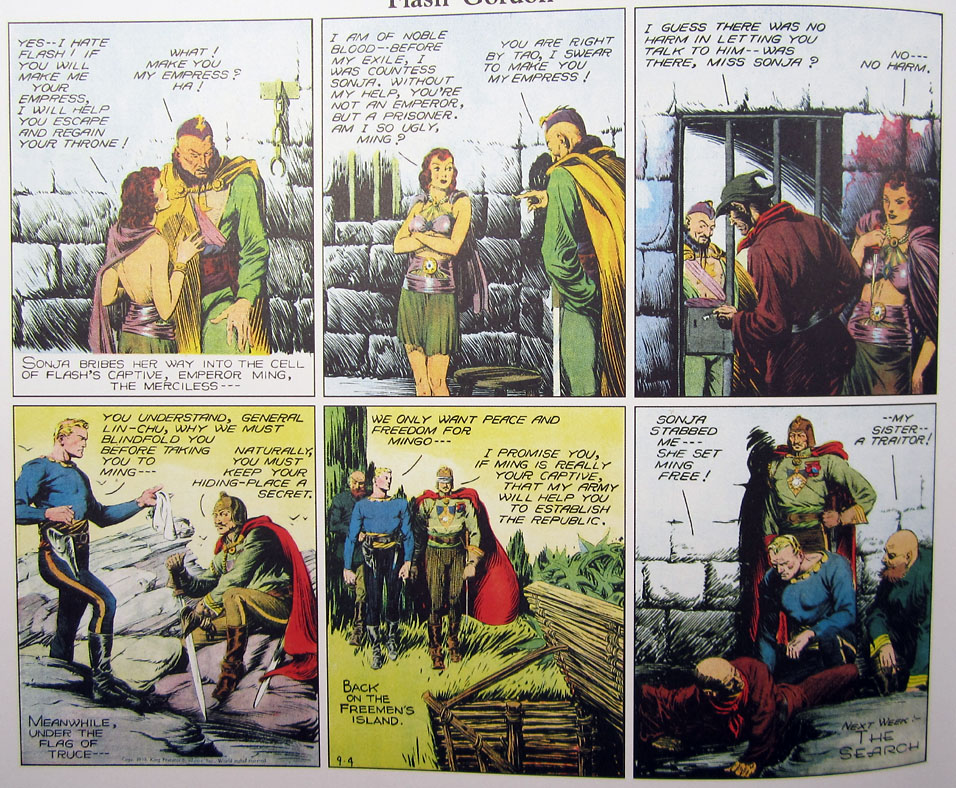
Note the full-figure scale, the heavy shading using thick arrays of curved brush lines, the rather awkward faces in perspective in the first and last panels, and especially the face of Ming the Merciless in the first panel. Now, compare with the strip from the very next week, September 11th:
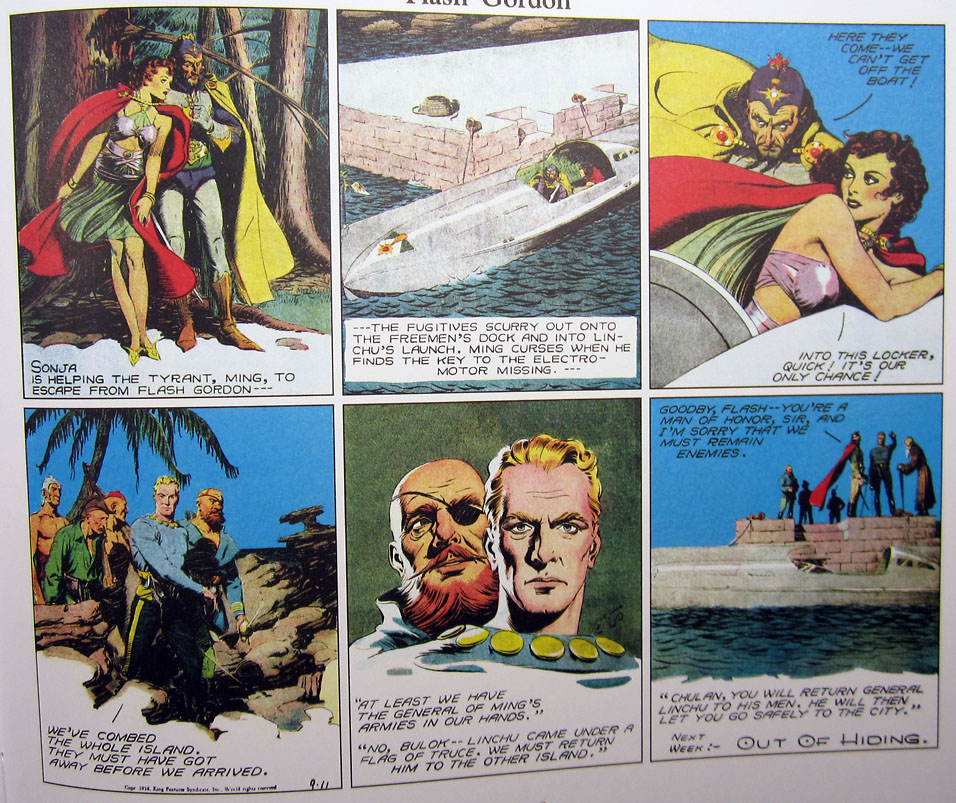
It's safe to say that a significant stylistic change has taken place in the space of a week, and, from the look of the faces in the third and fifth panels particularly—Ming and Flash himself have undergone dramatic facial changes—I think we can chalk this change up to Raymond switching to drawing the strip from models and/or reference; the subtle perspective of the tilted heads is suddenly flawless, and the faces themselves much more realistic, as you would expect from figures drawn from reference. The camera has shifted closer, the inking is lighter, using short, straight lines in the shadows, and thin lines around the figures and faces; the counter-reflective shading on the faces in the fifth panel is so photo-realistic that the colorist felt inspired to throw in some side lighting, and specular highlights on Sonja's clothing in the third panel.
From that point on, the Raymond's Flash artwork stays predominately in that referenced, photographic style. But although the switch seemed sudden there, he was clearly experimenting with drawing from reference, or at least a style that has all the hallmarks of that method, from time to time in the months before the final switch; let's roll back the clock a little further and see how that went. For our own point of reference, here's one of his last clearly non-referenced close-ups of the main heroes, from the March 6th, 1938 strip:
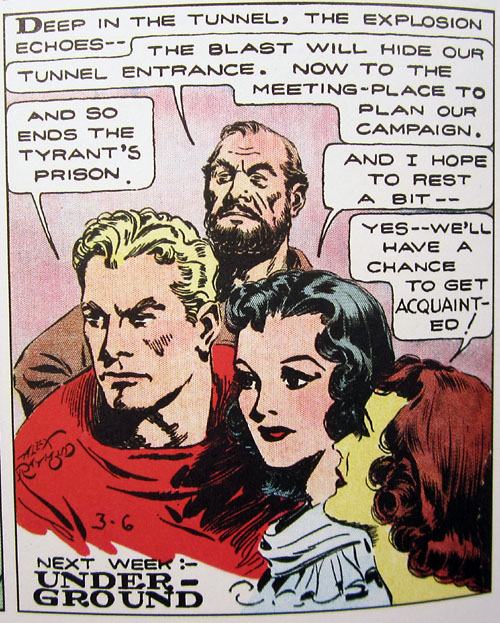
It's very realistic, but the faces have the feel of designs and archetypes worked out and polished in the artist's head, rather than having been taken from specific real-life faces. The heavy, curving brush lines are still there, and even somewhat more distinct here than was usual for him at this point; there's a rough, DRAWN feel to the composition.
All right. Now we jump a month ahead, to April 3rd, and a few panels look a little different than the rest:
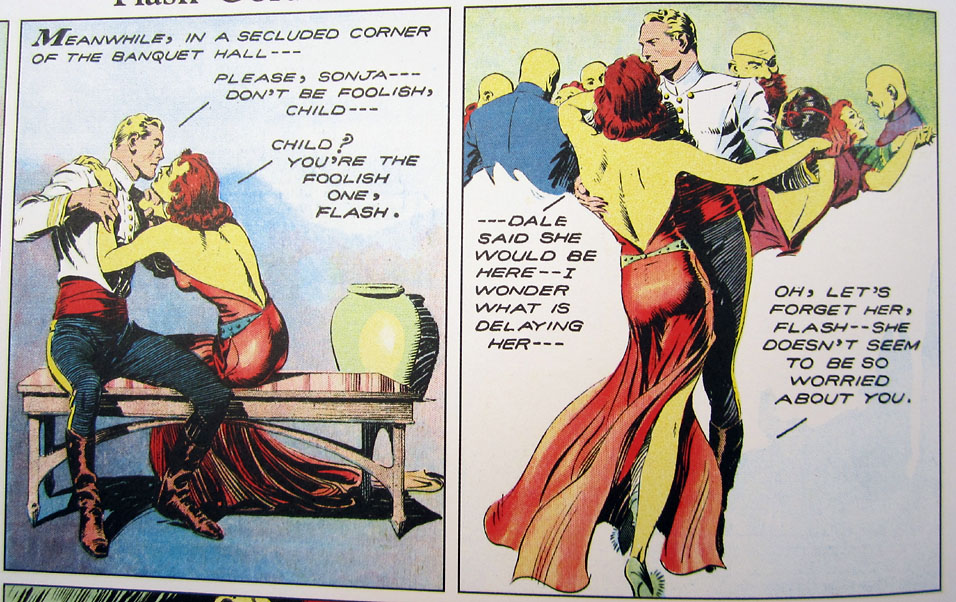
The inking is lighter, with more emphasis left to the outline, rather than sculpting the figures and faces out of heavy brushed shadows. Flash's pose in the first panel, where he raises his shoulders and hands lightly in perspective, is a subtle and complex one, and his expression, likewise, is not the pure fixed expression we're used to seeing on his chiseled face, but something both lighter and more complicated. It doesn't look definitely referenced, but there's certainly a new source of inspiration at work here in Raymond's art.
Two weeks later, Flash raises his eyebrow again—he really hadn't done this sort of thing before—even more noticeably this time; the heavy, voluminous drapery and perfect foreshortening of the face in the lower panel also stand out as different from Raymond's previous work (he had always loved drapery, but it was usually more graceful and flowing):
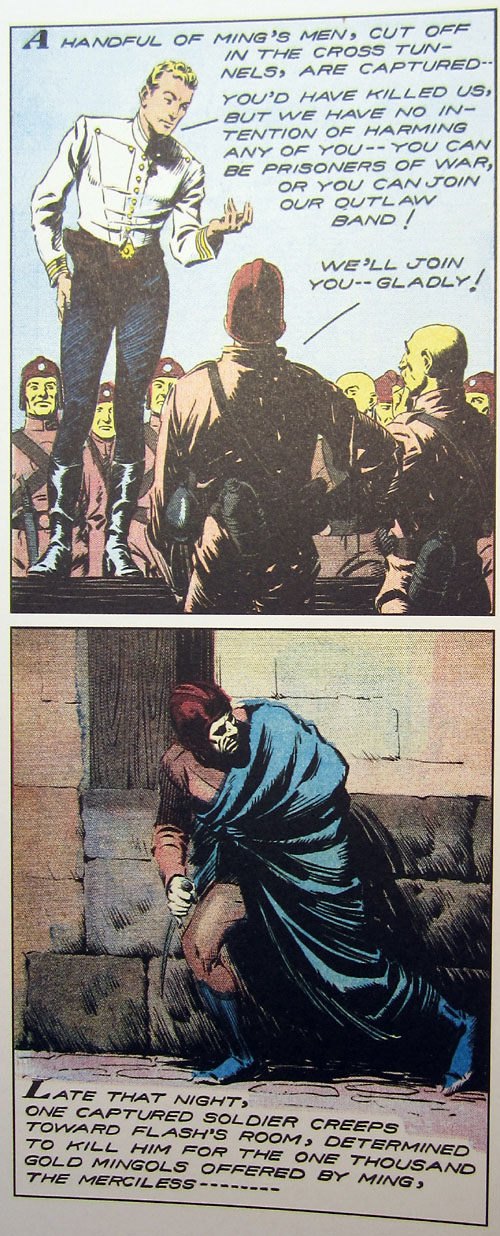
Three weeks further on—we're up to May 8th, 1938—and the light eyebrow and heavy shading styles are almost alternating from panel to panel:
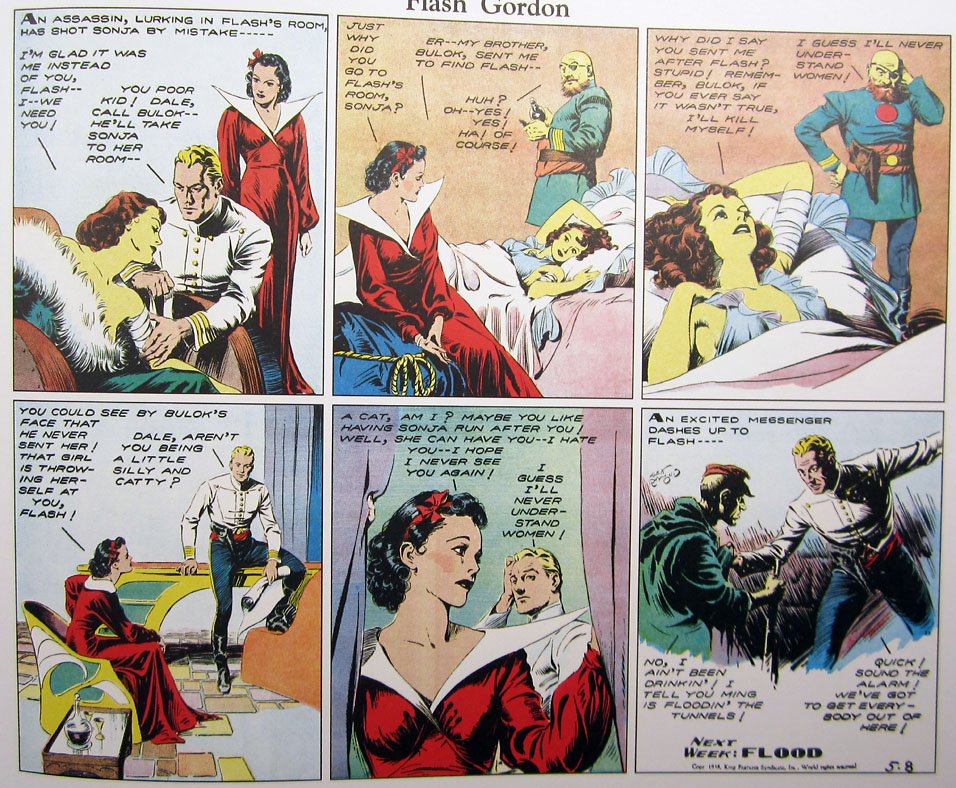
In panel 1, and especially in the last panel, Flash is done in a heavier style, with deep folds in his jacket and shadows across his face; in panels 4 and 5, on the other hand, we see the lighter, expressive eyebrow Flash. In panels 2 and 3, the bearded Bulok, and especially his reclining sister Sonja, have the lighter, outline-emphasizing style with its very subtle hand gestures and facial expressions, and the perspective of Sonja as she leans back from us in panel 3 is incredibly precise.
It's only a guess, but I have a feeling that Raymond was finding ways to start putting models or photographic reference to work here and there in the strip throughout the early part of '38. I have lots more to show of his experiments—not all of them successful—both leading up to and after he switched to the photo-realistic style for good later in the year, but they're hefty enough that I think I'd better save them...for tomorrow!
|
